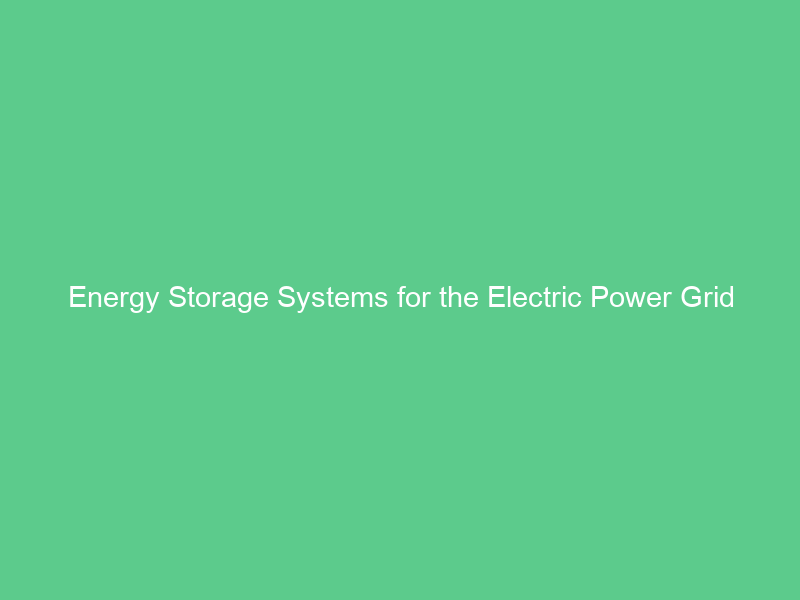Energy storage systems offer an efficient means of balancing electricity production with consumer demand on multiple timescales and providing additional services such as power quality regulation.
Utility-scale energy storage technologies come in various forms, from pumped hydropower and electrochemical (lithium-ion battery) battery technologies, to pumped hydropower systems and co-location options with renewable generation sources.
Battery Storage
Battery energy storage systems (BESSs) are large-scale power facilities that use batteries to store electrical energy, providing instantaneous responsiveness to electricity demand and supply fluctuations on sub-hourly timescales, optimizing grid efficiency while relieving transmission congestion while increasing flexibility and decreasing overall costs.
Engineers of the National Grid and international electricity systems must deal with fluctuations in energy demand. Fossil fuel peaker plants are currently used to manage these fluctuations; however, energy storage could provide an alternative way of handling them in future.
Energy storage provides us with the ability to move renewable generation from daytime peak hours into evening peak hours when it is needed most, while providing backup power during unplanned events. This increases resilience and lowers risk, making our grid safer and more reliable overall.
Hydropower Storage
Pumped storage hydro (PSH) is one of the more advanced forms of grid energy storage. PSH utilizes electricity to pump water uphill between two reservoirs at different elevations. When electricity demand falls, any energy used by pumps can be released via turbines to generate power; this process repeats continuously so as to maintain an uninterrupted stream of electricity regardless of any temporary daily or seasonal fluctuations in reservoir levels.
This system is highly efficient and renewable; its round-trip energy efficiency exceeds 80% compared to that of hydrogen (40-60%) or compressed air (65-75%).
PSH delivers a broad selection of services to the grid, such as network frequency control and virtual inertia capabilities. Their ability to deliver these services on short notice makes them an essential contributor towards providing clean, resilient and affordable electricity power solutions.
Combined Heat and Power (CHP) Storage
Combined heat and power (CHP) systems are highly efficient energy solutions that produce both electricity and thermal energy at once. By harnessing low-grade waste heat produced by gas turbines to generate process steam, hot water or chilled water for process use or chiller operation, CHP reduces boiler demand as well as electricity costs to provide process steam or hot/cold water services – helping organizations reduce utility bills and operating expenses while cutting energy usage costs significantly.
Traditional power and heat generation systems waste nearly two-thirds of fuel’s potential energy through transmission and distribution, discharging it into the atmosphere as wasted heat. By harnessing this potential energy and using it to meet building or facility thermal needs, CHP achieves efficiency levels of up to 95 percent for engine-based systems and 90 percent for turbine-based ones.
Integrating a BESS with a CHP system can help synchronize their electricity and thermal generation to meet daily load profiles, meet M&V standards, and maximize economic savings. Furthermore, using the battery can enable CHP systems to provide backup power during island mode operations.
Electricity Storage
Electricity storage helps balance supply and demand, improving grid quality in the process. Energy Storage System (ESS) systems use electricity from the grid to charge their batteries before discharging to generate energy for use at other times.
Lithium-ion batteries are the most widely utilized energy storage solutions for grid electricity, also found in mobile phones and electric cars. Other technologies used as energy storage include sodium-sulfur, metal air compression technology and hydrogen.
Renewables’ ability to store energy for extended periods allows renewables to meet electricity demand during times when they would typically not generate power, such as night for solar with photovoltaic cells and calm days for wind turbines, helping reduce fossil fuel plants during times of peak electricity demand. Storage solutions deployed strategically can even help avoid or defer building new transmission and distribution lines that would otherwise be necessary; this method is known as Non-Wires Alternative.

